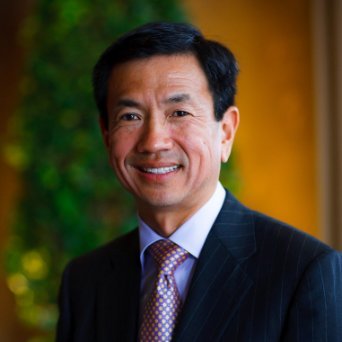Love hurts and with increasing discussion on preventative skin health, Ashleigh Sharman asks where we’re at with our friendly foe, the sun.
Your clients likely received their skin cancer education the way I did – through a friendly seagull named Sid who, first seen in 1981, instructed you to Slip (on a shirt)! Slop (on some sunscreen)! Slap (on a hat)!
Still considered the best way to prevent the formation of skin cancers – Sid advised to limit the amount of time in the sun, use an effective sunscreen and cover up with a physical barrier such as clothing – our sun education surely needs an update doesn’t it?
Visiting Australia for last week’s Non-Surgical Symposium in Melbourne, Dr Ronald Moy, renowned scientist, researcher, dermatologist, Beverly Hills cosmetic surgeon and founder of DNA Renewal skincare, says our focus must remain on the prevention of sun cancers but also to better understand the broad spectrum of this damage.
 “We have really matured in our messaging when it comes to talking about skin cancer prevention,” Dr Moy says. “How we talk to clients about using sunscreen, the language we use, has become even more important than the product itself, and so a public service message, like Slip, Slop, Slap’ becomes very effective.”
“We have really matured in our messaging when it comes to talking about skin cancer prevention,” Dr Moy says. “How we talk to clients about using sunscreen, the language we use, has become even more important than the product itself, and so a public service message, like Slip, Slop, Slap’ becomes very effective.”
“However, if salons, spas and clinics focused on skin health instead of selling services we’d be in a much better place when it comes to prevention of skin cancers. We want to encourage good nutrition, by eating a diet rich in fruit and vegetables, look to laser resurfacing techniques for sun damaged skin, and take up the use of DNA repair enzymes that address the complex changes cells undergo when they are attacked with UV and oxidative stressors.”
Dr Moy says the hardest concept to get across is the DNA damage aspect of molecular biology, and that skincare which helps the body’s own cells repair DNA damage is the new tidal wave of advanced skincare technology.
On the surface, it doesn’t appear the message has changed all that much however Dr Moy suggests that SPF alone should not the only criterion for choosing a sunscreen.
“Salon, spa and clinic owners should look to provide sunscreen containing both UVB and UVA filters as SPF is a poor indicator of how well it protects against UVA-induced DNA damage. SPF can give clients a false sense of security, it’s not a shield and we do not know how effective it is likely to be on skin that has already suffered skin cell damage,” he stresses.

So regardless of what labelling changes sunscreens may undergo in the future (and that could mean doing away with SPF altogether), client education remains a top priority.
With the majority of skin cancers diagnosed by a client’s spouse or significant other, there is growing and important pressure on skin therapists to spot skin changes and potential cancers.
“It’s true that therapists may not be trained in this area specifically but they are often in a position to spot these skin changes,” says Dr Moy. “The most important concept that we teach now is the ‘ugly duckling’ model – when a mole looks different to any existing mole on the body.”
“Diagnosis and prevention should be taken very seriously and skin therapists should know that they can play an important in saving lives.”
With millions of cases of skin cancer diagnosed annually across the globe, research is steaming ahead, with Dr Moy saying a pill to target such gene mutations could be only a decade away.
As this magic pill waits in the wings, for now our efforts are best spent in prevention of cancer at a personal and client level through regular use of sunscreen and physical protection, annual skin examination and avoidance of solar radiation during peak sunlight hours.
Make it your mission to have this discussion with clients regularly, for all seasons – not just for skin cancer prevention but for greater skin health overall.
Skin Cancer Statistics (Cancer Council)
- Australia has among the highest rate of skin cancer in the world.
- About two in three Australians will be diagnosed with some form of skin cancer before the age of 70.
- Basal cell carcinoma (BCC) and squamous cell carcinoma (SCC) are the most common types of non-melanoma skin cancer.
- In Australia, over 750,000 new cases of BCC and SCC are diagnosed and treated each year.
- BCC can develop in young people, but is most common in people aged over 40.
- SCC occurs mostly in people aged over 50.
- Melanoma can occur in young people, but is more common in people over 40, especially men.
www.advancedcosmeceuticals.com.au; www.cancercouncil.com.au
* Further reading: ‘Skin Cancer Prevention: Current Modalities and Future Implications’; Telia DeBoyes, David M. Ozog, MD, and Ronald L. Moy, MD. Federal Practitioner, May 2010, pp40-44.




